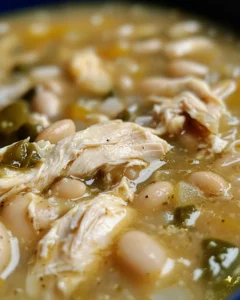Pot pies, a staple of comfort food, are beloved for their hearty fillings and, most notably, their crusts. The crust of a pot pie isn’t just a container for the delicious filling; it’s an integral part of the dish’s flavor and texture. This guide will delve into the art of making the perfect pot pie crust, covering everything from the basic ingredients to advanced techniques.


Dive into the world of savory pies with our comprehensive guide on What’s the Difference Between a Meat Pie and a Pot Pie?, offering insights into the nuances that set these two dishes apart.
Types of Pot Pie Crusts
Pot pies can come with various types of crusts, each bringing its own texture and flavor to the dish. The most common types include:
- Flaky pastry crust: Known for its layers and buttery taste.
- Shortcrust pastry: Offers a more crumbly, tender texture.
- Puff pastry: Light and airy, with several flaky layers.
- Biscuit topping: A less traditional but equally delicious crust option.
Ingredients for a Basic Pot Pie Crust
The secret to a great pot pie crust lies in the simplicity of its ingredients. Here’s what you’ll need:
- Flour: 2 cups – provides the structure
- Butter: 1 cup (cold and cubed) – responsible for the flakiness
- Salt: 1 teaspoon – enhances flavor
- Water: 4-6 tablespoons (ice cold) – binds the dough
Understanding the role of each ingredient is crucial. For instance, the butter must be cold to ensure the crust becomes flaky.
Step-by-Step Guide to Making the Perfect Pot Pie Crust
Creating the perfect crust involves a few critical steps:
- Mix the dry ingredients: Combine flour and salt in a large bowl.
- Cut in the butter: Use a pastry cutter or fork to blend the butter into the flour until the mixture resembles coarse crumbs.
- Add water: Gradually mix in ice-cold water until the dough comes together.
- Chill the dough: Wrap it in plastic and refrigerate for at least an hour.
- Roll out the dough: On a floured surface, roll the dough to fit your pie dish.
- Pre-bake (optional): For a crisper crust, consider pre-baking before adding the filling.
For those interested in exploring more about pies, the Fish Pie Jacket Potatoes Recipe combines the comfort of a pot pie with the unique twist of being served in a jacket potato.
Variations of Pot Pie Crusts
To cater to various dietary needs and preferences, consider these crust variations:
- Gluten-free options: Substitute all-purpose flour with a gluten-free blend.
- Vegan crust alternatives: Use plant-based butter and cold water.
- Herbed or flavored crusts: Add herbs like thyme or rosemary for an aromatic twist.
Common Mistakes and How to Avoid Them
Even experienced bakers can encounter issues. Here are some common pitfalls:
- Overworking the dough: This can lead to a tough crust. Handle the dough as little as possible.
- Not chilling the dough: Cold dough is easier to work with and results in a flakier crust.
- Overfilling the pie: Leave enough room for the crust to properly encase the filling.
FAQs
- Can I use store-bought crust for pot pies? Yes, but homemade crust will always taste better.
- How do I make my pot pie crust flaky? Ensure your butter is cold and don’t overwork the dough.
- Can pot pie crust be made in advance? Absolutely, you can refrigerate it for up to 3 days or freeze it for longer storage.
By following this guide, you’ll be well on your way to creating pot pie crusts that are not only delicious but also cater to a wide range of dietary needs and preferences. Whether you’re a seasoned baker or new to the kitchen, mastering the art of the pot pie crust will elevate your cooking and delight your taste buds.
[hurrytimer id=”3605″]


